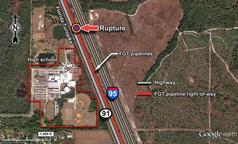 Five years ago a natural gas pipeline blew up between the Florida Turnpike
and I-95, flying a 104-foot piece of 18-inch pipe through the air,
shutting down both roads, and fortunately missing a high school.
NTSB determined it was the fault of the pipeline operator,
Florida Gas Transmission Company, LLC (FGT).
Five years ago a natural gas pipeline blew up between the Florida Turnpike
and I-95, flying a 104-foot piece of 18-inch pipe through the air,
shutting down both roads, and fortunately missing a high school.
NTSB determined it was the fault of the pipeline operator,
Florida Gas Transmission Company, LLC (FGT).
 FGT was
written up by the National Transportation Safety Board (NTSB)
in
NTSB/PAB-13/01 of 13 August 2013
for “Damage/Clean-up Cost: $606,360” in this 4 May 2009 incident
near Palm City, Florida:
FGT was
written up by the National Transportation Safety Board (NTSB)
in
NTSB/PAB-13/01 of 13 August 2013
for “Damage/Clean-up Cost: $606,360” in this 4 May 2009 incident
near Palm City, Florida:
The National Transportation Safety Board determines that the probable cause of the accident was environmentally assisted cracking under a disbonded polyethylene coating that remained undetected by the integrity management program. Contributing to the accident was Florida Gas Transmission Company’s failure to include the pipe section that ruptured in the integrity management program. Contributing to the prolonged gas release was the pipeline controller’s inability to detect the rupture because of SCADA system limitations and the configuration of the pipeline.
So NTSB said it was FGT’s fault.
And Florida and Martin County taxpayers had to pay for Florida Highway Patrol and the Martin County Hazardous Materials Team, Fire Rescue Department, Police, and Sheriff’s Office, plus medical costs.
Also school costs:
About 6:40 a.m., the fire chief ordered the evacuation of South Fork High School and the Foxwood residential community, both less than a mile southwest of the rupture. The school remained closed for the day, and the fire chief staged additional units in Foxwood to respond to any fires that might break out if gas were to ignite. Emergency responders also closed I-95 and SR-91 in both directions to maintain about a 1-mile perimeter around the ruptured pipeline.
Here’s the 104-foot long 18-inch wide pipeline missile after it landed:
FGT didn’t get away with Force Majeure on the I-95 pipeline explosion, like it did in routing around the 25-acre sinkhole in Assumption Parish, Louisiana, but Florida taxpayers still had to pick up the tab for the damages.
Here’s what happened in the crater the explosion left:
It could have been a lot worse. That was an 18-inch pipeline that exploded. FGT had two others next to it: one 24-inch and the other 30-inch.
The report has much more detail, including colonies of corrosion pits and cracks:
You can see them sinking into a cross-section of the pipeline wall:
And a scanning electron microscope shows subsurface cracks:
It took four and a half years until NTSB’s August 2013 report included this bit about the Pipeline and Hazardous Materials Safety Administration (PHMSA):
After the accident, a review of the area was conducted through PHMSA to examine whether a neighboring high school qualified as an HCA “identified site.” The findings from the review concluded that the rupture location should have been designated as Class 3 and should have included an HCA identified site because the potential impact radius (366 feet) intersected three semi-open structures at the nearby high school.33 (See figure 9.)
Ever heard of exploding solar panels?
-jsq
Short Link:

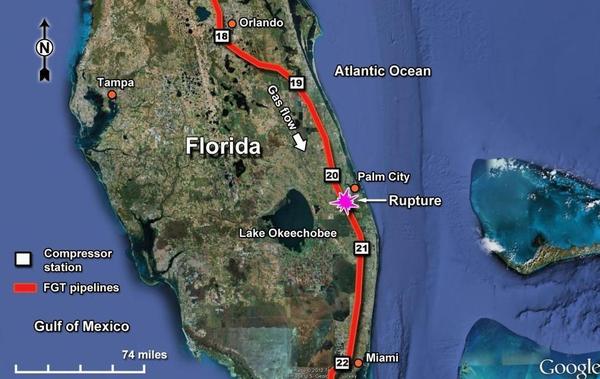

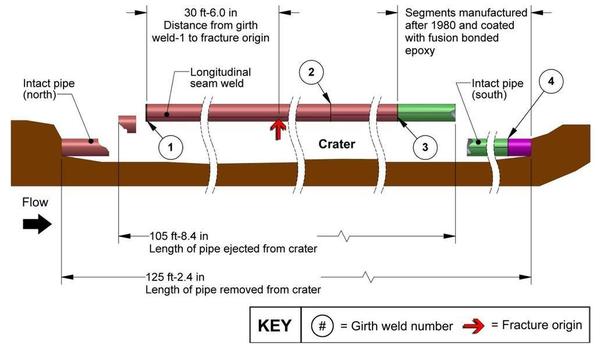
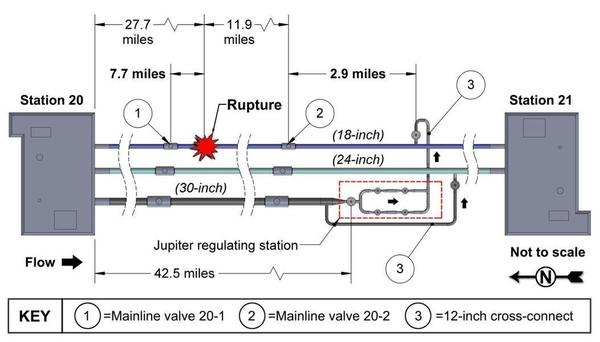
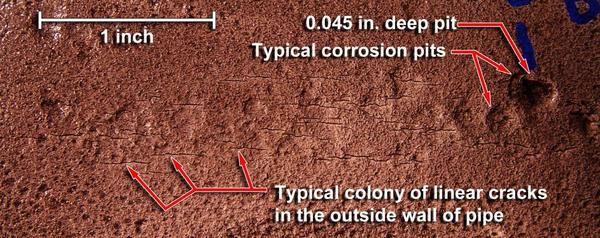
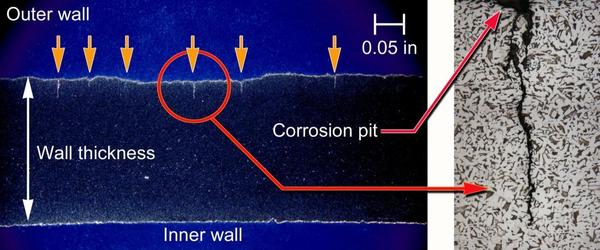
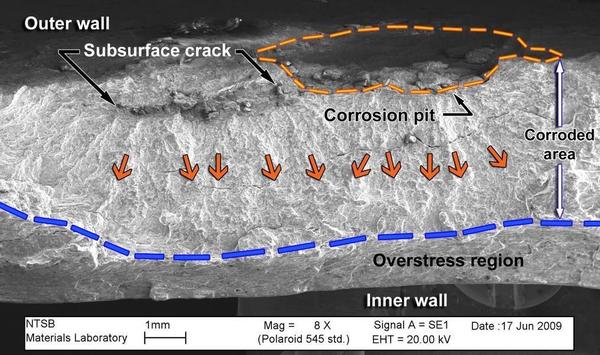
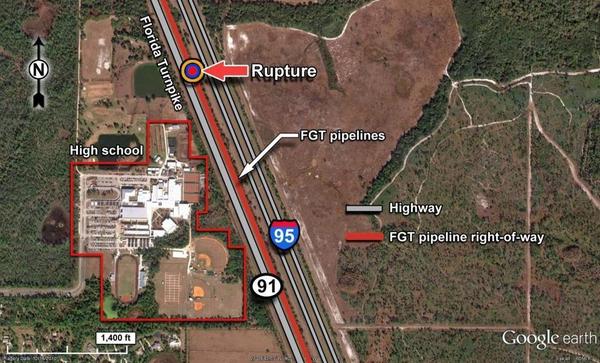
I recall when this happened- little did I know I would later be forced by my government to accept this same risk to myself and my children, on my family’s property, so Specta Energy can profit by selling LNG on the foreign market.